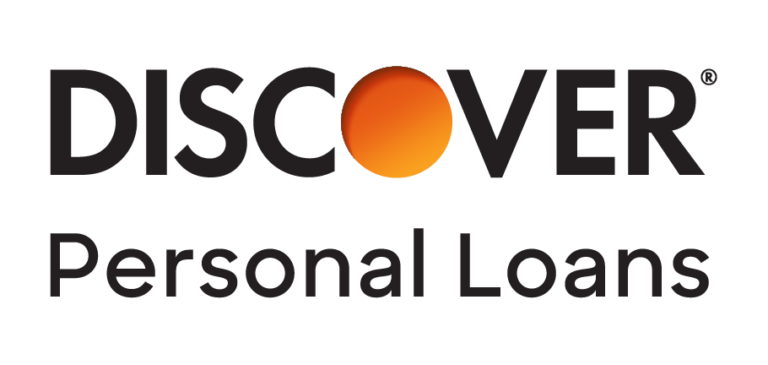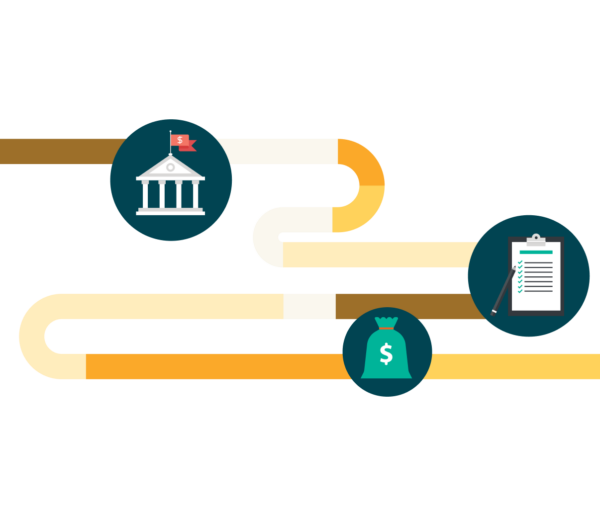Our goal is to give you the tools and confidence you need to improve your finances. Although we receive compensation from our partner lenders, whom we will always identify, all opinions are our own. Credible Operations, Inc. NMLS # 1681276, is referred to here as "Credible."
A personal loan is a type of installment loan you can use for almost any purpose, including consolidating high-interest debt, financing a home renovation project, or covering an unexpected medical bill.
Your credit score — among other factors, like income — determines how much you’ll pay for one. For example, debt consolidation loans for very good credit had an average interest rate of 14.04%, according to Credible data in October 2023. But even if you have bad credit, a personal loan may offer a lower APR than other options like credit cards. And you could receive funding as soon as the day you apply.
Learn how to get a personal loan by following these five steps:
- Review your credit report
- Meet the qualifying requirements
- Compare multiple lenders
- Use a personal loan calculator
- Choose your loan
Plus, consider the pros and cons of getting a personal loan.
1. Review your credit report
Personal loans are typically unsecured, meaning you’re not required to put up collateral to obtain the loan. However, the absence of collateral increases the lender’s risk, so they’ll need to look closely at your credit profile to determine whether to approve you for a loan and at what interest rate.
Since lenders will examine your credit, it’s wise to review your credit report beforehand, looking for inaccurate or fraudulent information that may harm your profile. You can review your credit score for free weekly through AnnualCreditReport.com.
If you discover any issues in your credit report, take steps to improve your credit, such as:
- Dispute credit report errors and inaccuracies: Errors on your credit report, such as a missed payment that you actually paid on time, can negatively affect your credit score. By disputing inaccurate information with the major credit reporting agencies — Equifax, Experian, and TransUnion — you can potentially have them corrected or removed, which may improve your credit score.
- Consistently pay bills on time: Payment history is a significant factor that accounts for 35% of your credit score. Consider setting up automatic payments or reminders to help you avoid late payments.
- Pay down debts: High debt levels can drag down your credit score. As a general rule, aim to keep your credit utilization rate — the amount of available credit you’re using — below 30% to help improve your credit score.
2. Meet the qualifying requirements
Before applying for a personal loan, it’s essential to understand the eligibility requirements. For example, many lenders have a minimum credit score requirement, typically 620 or higher. Of course, the higher your credit score, the better your approval odds for a loan, and the more favorable your rate is likely to be.
Lenders also consider your income and debt-to-income ratio (DTI) to make sure you can afford to make your monthly payments. DTI measures the total of your monthly debt payments against your gross (pretax) monthly income and is expressed as a percentage. So, if you earn $6,000 each month before taxes, with $2,000 going toward your monthly bills, your DTI is 33% (2,000 ÷ 6,000 = 0.33, or 33%). DTI requirements vary by lender, but generally, lenders prefer borrowers to have a DTI of 35% to 40% or less.
3. Compare multiple lenders
Shopping and comparing multiple personal loan offers can help you find a loan with the best balance of benefits, including low interest rates, flexible repayment terms, and low or no fees. Personal loans are available from a wide variety of financial institutions, such as:
- Banks: If you already have a relationship with a bank, getting a quote for a personal loan may make sense. Many banks offer discount rates for existing customers, and you can usually apply at your local branch. However, the loan application process at traditional banks can be more stringent and require more paperwork than other financial institutions.
- Credit unions: Credit unions are not-for-profit organizations whose members share something in common, such as a profession or location. For example, the members of Navy Federal Credit Union are all military veterans, active or retired service members, Department of Defense civilian personnel, or their families.
- Online lenders: Digital lenders streamline the application process, and you can usually complete the entire process online. Online lenders typically have lower overhead than their brick-and-mortar competitors, and can usually offer lower rates and fees and fast loan funding.
To give you an idea of what you may qualify for, compare rates, repayment terms, and minimum credit score requirements from the following lenders, most of which are Credible partners.
| Lender | Fixed rates | Loan amounts | Min. credit score | Loan terms (years) | Check rates |
|---|---|---|---|---|---|
 | 7.99% - 29.99% APR | $10,000 to $35,000 | Not disclosed by lender | 2, 3, 4, 5 | |
|
|||||
 | 9.95% - 35.99% APR | $2,000 to $35,000** | 550 | 2, 3, 4, 5* | |
|
|||||
 | 11.79% - 20.84% APR | $10,000 to $50,000 | 730 | 3, 4, 5, 6 | |
|
|||||
 | 6.99% - 35.99% APR | $2,000 to $50,000 | 600 | 3, 5 | |
|
|||||
 | 7.99% - 24.99% APR | $2,500 to $40,000 | 660 | 3, 4, 5, 6, 7 | |
|
|||||
 | 7.95% - 29.99% APR | $5,000 to $40,000 | 640 | 2, 3, 4, 5 | |
|
|||||
 | 7.04% - 35.99% APR | $1,000 to $40,000 | 660 | 3, 5 | |
|
|||||
 | 7.99% - 35.99% APR | $2,000 to $36,500 | 660 | 2, 3, 4, 5, 6 | |
|
|||||
 | 6.49% - 25.29% APR with autopay | $5,000 to $100,000 | 700 | 2, 3, 4, 5, 6, 7 (up to 12 years for home improvement loans) | |
|
|||||
 | 18.0% - 35.99% APR | $1,500 to $20,000 | 540 | 2, 3, 4, 5 | |
|
|||||
 | 8.49% - 17.99% APR | $600 to $50,000 (depending on loan term) | 760 | 1, 2, 3, 4, 5 | |
|
|||||
 | 8.99% - 35.99% APR | $2,000 to $50,000 | 640 | 2, 3, 4, 5 | |
|
|||||
| 8.99% - 35.49% APR10 | $5,000 to $100,000 | Does not disclose | 2, 3, 4, 5, 6, 7 | ||
|
|||||
 | 11.69% - 35.99% APR7 | $1,000 to $20,000 | 560 | 3, 5 | |
|
|||||
 | 7.74% - 35.99% APR | $1,000 to $50,000 | 600 | 2, 3, 5, 6 | |
|
|||||
 | 6.6% - 35.99% APR4 | $1,000 to $50,0005 | 620 | 3 or 5 years4 | |
|
|||||
What to consider when comparing lenders
When you compare personal loan options, review the lender’s rates, fees, and other essential factors, as shown below, to identify the best loan that suits your financial needs.
- Be mindful of borrowing amounts: Personal loan borrowing amounts range from $100 to $200,000. But it’s wise to only borrow what you need, since you’ll pay more interest on a larger amount and may be tempted to spend more.
- Shop and compare interest rates: According to the most recent data from the Federal Reserve, the average interest rate on a 24-month personal loan from a bank is 11.48%. Still, interest rates vary by lender, and you may receive higher or lower offers based on your credit profile, DTI, and other factors. Comparing interest rates and terms from multiple lenders can help you find the best overall loan.
- Get the right repayment term: Generally, personal loans come with repayment terms ranging from 1 to 7 years. As a general rule, longer loan terms have lower monthly payments but charge you more in interest over time, while shorter terms come with higher monthly payments while accumulating less in interest charges.
- Watch out for fees: Many lenders charge fees on their personal loans, including origination fees, application fees, and late fees. These fees can offset any savings the lender offers in the form of low interest rates.
- Look for discounts: Before signing on a new loan, ask the lender if you qualify for any discounts. For example, you may be able to take advantage of a discount for setting up automatic payments, which can translate to a percentage-points reduction on your interest rate.
- Enlist a cosigner: Some lenders allow you to add a cosigner to your application who will share responsibility for repaying the loan. If your credit isn’t where it needs to be, a cosigner can help get your loan across the finish line, often with a lower interest rate.
- Consider the funding time: Funding time can vary from lender to lender — something to take into account if you’re in a bind and need the funds right away. Traditional banks and credit unions can usually fund your account in 1 to 5 days. Online banks are usually very fast, with some lenders funding your loan as soon as the same day you apply.
4. Use a personal loan calculator
Never sign for a loan without understanding how much it will cost you, so you can ensure the loan payments will fit within your budget. Using a personal loan calculator can help you estimate your loan payments.
For example, the average personal loan size as of early 2023 is roughly $8,000, according to a TransUnion report. As mentioned, the average interest rate on a 24-month personal loan is 11.48%. By punching these numbers into Credible’s personal loan calculator, we see you would have a $375 monthly payment on a 24-month personal loan for $8,000 at 11.48%. In all, you’d pay a total of $8,991, with about $991 in interest over the loan’s repayment term.
Enter your loan information to calculate how much you could pay
With a $ loan, you will pay $ monthly and a total of $ in interest over the life of your loan. You will pay a total of $ over the life of the loan.
Need a
personal loan?
Compare rates without affecting your credit score. 100% free!
Check Personalized Rates
Checking rates won't affect your credit score
5. Choose your loan
After shopping and comparing the best personal loan lenders, it’s time to choose the personal loan that best addresses your financial needs and lifestyle goals. While you may have filled out a prequalification form, you’ll need to complete a full application and submit any supporting documents your lender requires, such as the following:
- Government-issued personal ID
- Social Security number
- Address and contact information
- Monthly mortgage or rent amount
- Monthly income
- Employer’s name and work number
- Pay stubs, W-2s, or tax returns
- Loan purpose
- Desired loan amount and term
The application process is relatively straightforward, and if approved, you could receive funding in five business days or less, or even the same day you apply, with some lenders.
Key terms to know
Here are some terms you’re likely to see as you compare personal loan offers and consider your options:
- Expected loan amount: This is also known as your desired loan amount, the amount of money you’d like to borrow. Be aware that fees can decrease the amount you receive.
- APR: The annual percentage rate (APR) is the cost of borrowing money for a year, expressed as a percentage. APR includes your interest rate and the fees associated with the loan.
- Fixed interest rate: A fixed interest rate doesn’t change over the life of the loan, meaning your payments will stay the same.
- Secured or unsecured loan: Secured loans require collateral, such as a vehicle or jewelry, to guarantee payment in case you default. By contrast, unsecured personal loans don’t require you to put up any collateral, and lenders rely on your credit profile instead. Due to the increased risk to the lender, unsecured loans usually come with higher interest rates.
- Origination fee: An origination fee is an administrative fee lenders often charge for processing your loan. These fees typically range from 1% to 12% of your loan amount and are usually deducted from your funds before you receive them.
- Prepayment penalty: If you aim to pay off your loan early, make sure beforehand that your lender doesn’t charge a prepayment penalty. This fee kicks in if you pay off your loan before the end of your repayment term.
- Payday loans: Payday loans can be enticing when you need money fast. However, financial experts typically advise against this type of borrowing due to the high costs. According to the Consumer Financial Protection Bureau, the fees on a typical two-week payday loan equate to an APR of nearly 400%.
Pros and cons
Comparing the pros and cons of personal loans against other forms of borrowing can help you determine which option makes the most sense for your situation.
| Type | Personal loans | Credit cards | Home equity lines of credit (HELOCs) |
|---|---|---|---|
| Pros | Lower interest rates than credit cards Interest rates typically fixed Help you build credit | Convenient form of payment Borrow only what you need, not the amount you’re approved for Zero-liability protection for unauthorized charges Earn rewards and other perks | Borrow only what you need, not the amount you’re approved for Only pay interest on what you borrow May qualify for a tax deduction |
| Cons | Some lenders charge fees Higher interest rates than secured loans (HELOCs) | Variable interest rates can be higher than other forms of lending Annual, late, and other fees. Easy to overspend | Variable interest rates that can increase your payment Must risk your home as collateral May have prepayment penalties and other fees |
Kat Tretina has contributed to the reporting of this article.






